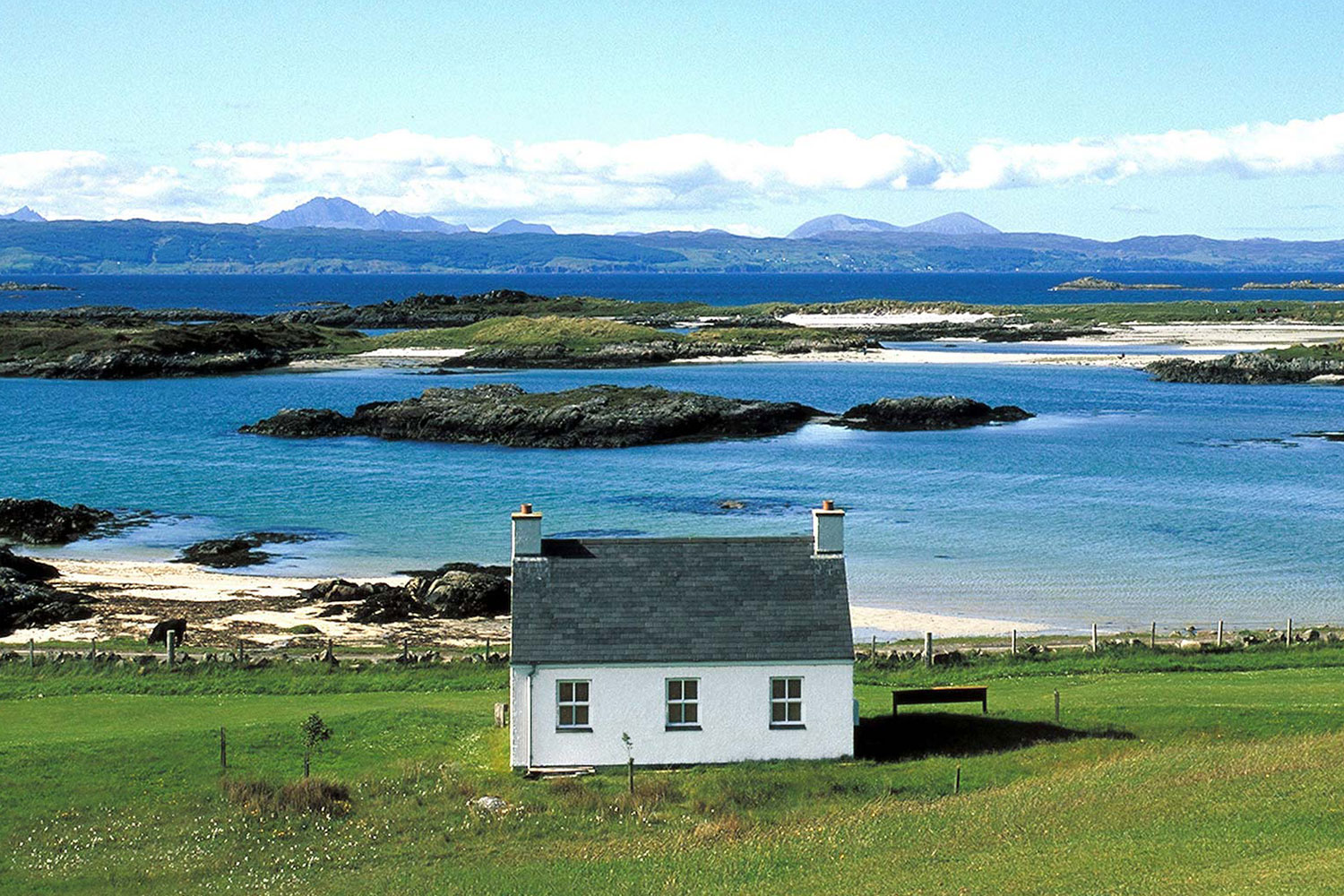The History of golf
at Traigh
Golf has been played at Traigh since about 1900. The original layout was very cramped – in fact several fairways crossed over each other. Golfers had to share the ground with cows and sheep up until the 1990s, and the livestock were kept off the greens with fencing wire.
This all changed in 1993 when the owner and golfing enthusiast, Jack Shaw Stewart, invited the well-known Scottish golf architect, Johnny Salvesen, to completely redesign the course, incorporating some additional land to the east. Johnny had been Captain of the Royal and Ancient Golf Course of St. Andrews, and Chairman of the R & A Championship Committee. In the latter role, he was closely involved in preparing courses for the Open. Johnny moved on to design and upgrade courses all over Britain and abroad, but he was especially proud of his work at Traigh.
Johnny used the natural contours of the hills that rise up from the beach (originally sand dunes) to create "a fair challenge to all levels of golfer – but a course that is great fun to play on, so that one wants to play it again". During the rebuilding of the course, invaluable help and advice was also provided by Jimmy MacDonald MBE, who was Head Greenkeeper at Royal Lytham & St. Annes. Jimmy was a native of Arisaig, and knew the ground well.
The iconic clubhouse is modelled on a traditional Highland 'But and Ben' two-roomed cottage. This design was the idea of Jack Shaw Stewart’s wife Vora, who wanted to create something entirely in keeping with the local landscape when the course was redesigned. It has been much photographed and incorporated in several paintings of the course.
TGC Club House - designed by Vora Shaw Stewart
In early 2015 the course received worldwide publicity after an enormous sinkhole appeared on the seventh fairway following torrential rain at the end of the previous year. The run-off from all the rain had shifted about 200 tons of sand and peat onto the beach below the course. The sinkhole itself was seven meters long, three meters wide, and over three meters deep. It turned out that a drainage pipe under the course had been unable to cope with the exceptional rainfall. After the sinkhole had been repaired, a new grass bunker was built on the site (albeit considerably smaller than the original sinkhole). The seventh hole was renamed ‘The Sinkhole’ or ‘An Sloc’ following the course’s tradition of naming holes in both English and Gaelic.


